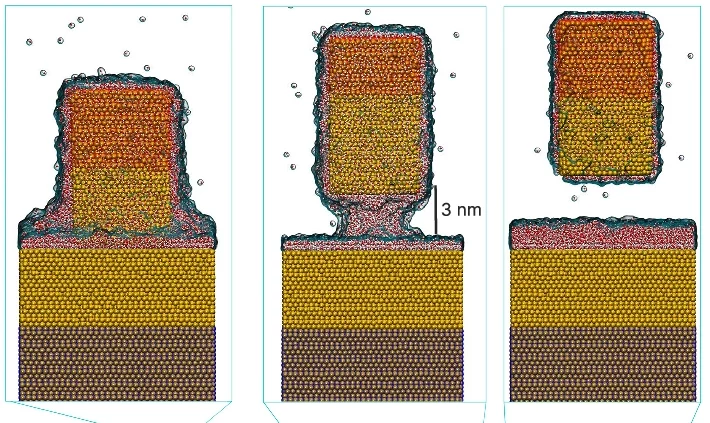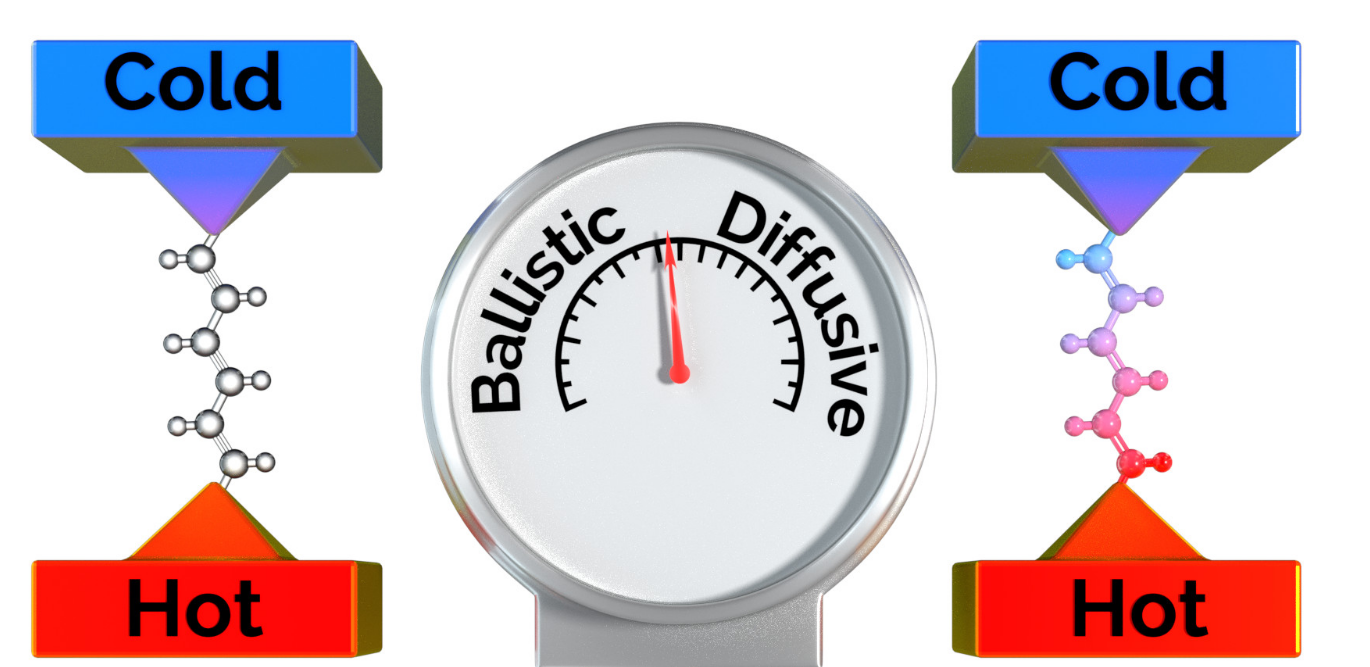Nanoscale Heat Transport
Unveiling the atomic details of an exotic form of heat transport
Did you know that at the nanoscale, thermal energy can be transported through a wire at room temperature without losing energy or building up a gradient inside the wire? This phenomenon, akin to thermal superconductivity, challenges our understanding.
Harnessing and controlling energy flow between a hot and a cold object has led to one of the most profoundly reshaping technological revolutions of our era. As Denis Papin once remarked, “one man, by this means, will be able to do as much as hundreds others can do without it,” referring to a steam engine precursor in his correspondence with Leibniz. His estimate was conservative, as heat engines have sustained the growth and development of our society as a whole for centuries. However, this must change in the forthcoming years.
Beyond energy supply, detailed control of heat transport is essential in various areas, including thermal management, thermopower, and thermoelectrics. Efficient heat dissipation is crucial to prevent the breakdown of electronic devices due to Joule heating generated by electric current. This poses a major challenge in the relentless pursuit of device miniaturization, where denser circuits require improved heat dissipation, which in turn compromises miniaturization itself – as evidenced by the fact that a CPU heat sink is often several times larger than the CPU itself.
In this era, where nanotechnology is recognized as pivotal to addressing societal challenges, understanding and controlling heat flow at the nanoscale becomes imperative. This is arguably one of the largest pending challenges of nanoscience and nanotechnology. Classical laws, such as Fourier’s law, break down at such scales. For example, according to Fourier’s law, a thermal gradient forms in a wire connecting a hot (A) and a cold bath (B) during heat conduction. However, recent experiments showed that at the nanoscale heat conduction may proceed without building up such gradient – thus in direct violation of classical laws. This phenomenon arises because the mean free path of phonons (heat carriers) can exceed the size of the contact, such as 100nm in graphene. Consequently, heat conduction may proceed without phonon scattering inside the wire, preventing it from warming up.
This remarkable property could reshape classic thermal engineering, leading to unprecedentedly efficient heat sinks or even thermoelectric nano-refrigerators. However, realizing its full potential requires a detailed theoretical understanding and modeling of complex out-of-equilibrium processes occurring at such scales.
In a tight collaboration with Prof. Carlos Cuevas, we meet this challenge by tackling the following fundamental problems in the field:
Recent advances in nanofabrication and scanning probe microscopy, have enabled measurements of heat transport through single alkane chains,. They conclusively demonstrate that thermal conductance is length-independent for molecules composed from 2 to 10 carbon atoms, i.e. inline with ballistic heat-transport. Whilst settling decades of dispute, it opened new questions, including whether and how one could chemically design heat-transport. Although recent experiments showcase the enormous technological potential of such feat (molecular nano-refrigerator; heat-sinks) a lack of atomic understanding hinders a de novo design. Here we push forward the state of the art by providing an atomically detailed understanding of how the phenomenological Fourier’s Law of Heat transport emerges in single molecule contacts. To this end, quantum-mechanically derived force fields are used in conjunction with NEMD simulations to accurately describe heat-transport on any given molecular contact. Moreover, through a generalized spectral decomposition we identify the molecular vibrations dominating heat-transport, thus gaining a chemical intuition then used to control heat transport in molecular contacts. Moreover, such decomposition also unveils specific phonon-phonon scattering processes leading to Fourier law.
A significant milestone in calorimetry was recently meet by measuring heat transport through a single-atom junction. Thus, now we are in position to measure heat-transfer across various distances, from atom-sized contacts to far reaches. Focusing on metals, when they come into contact (d=0nm), heat is essentially carried by electrons. At large distances, heat is carried by photons either in a Planckian or super-Planckian fashion. When separation between them reaches the nanometer (d < 10nm), a transition from thermal radiation to conduction is expected. In a recent experimental work, heat-flux between two gold contacts at a distance ranging 0.2-7nm was measured in ultra-high vacuum. The observed heat flux exceeded conventional theories by four orders of magnitude, and also existing theories of phonon tunneling. These experimental observations suggest that new models are needed to describe heat transfer across vacuum gaps at nanometer distances. Here we provide an atomic description of this abnormal heat transport using non-equilibrium molecular dynamics simulations.
Publications
R. López, O. Mateos, P. M. Martínez, J. J. García-Esteban, A. Ibabe, N. Roca-Giménez, P. Segovia, E. G. Michel, E. J. H. Lee, J. G.Vilhena, J. C. Cuevas and N. Agraït. “Heat transfer in metallic nanometre-sized gaps”. Nat. Coms. 16, 7324 (2025).

S. C. Yelishala, Y. Zhu, P. M. Martínez, H. Chen, M. Habibi, G. Prampolini, J. C. Cuevas, W. Zhang, J. G. Vilhena and L. Cui. “Phonon interference in single-molecule junctions”. Nat. Mater. 24, 1258-1264 (2025).

